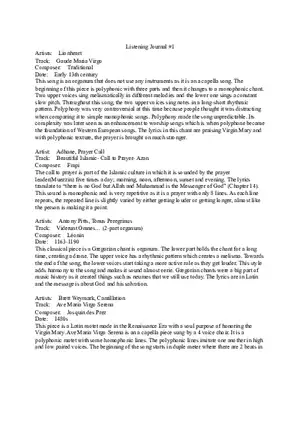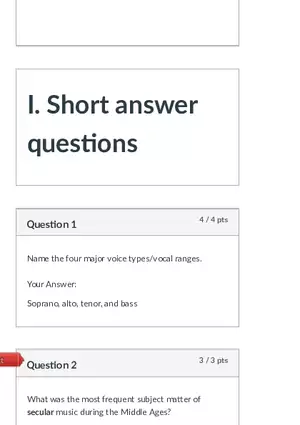Lecture Note
Music Theory and Analysis, Including Notation and Terminology
-
University:
University of North Texas -
Course:
MUMH 2040 | Music Appreciation Academic year:
2023
-
Views:
117
Pages:
2
Author:
Linda Kelly
Related Documents
- Roach Xavien Circle of Fifths Worksheet
- Midterm 1 Music - Study Guide
- Music-428 Project Proposal
- Practical Notes for a Symphony - The Promise of Living
- The Return of the Romantic via the Red Carpet
- The Critical Reception of Beethoven’s Compositions by His German Contemporaries Part 2
- The Critical Reception of Beethoven’s Compositions by His German Contemporaries Op. 101 to Op. 111
- Miles Davis Solo Transcription Oleo Bb
- Toccata and Fugue in F Major for Organ
- Harrison's Dream, Oboe
- All Trumpet Parts Moose the Mooche
- Hindemith Movements
- Psychedelia - Lecture Notes 3
- Appreciation Of Music - Questions and Answers
- Hist of Rock'n Roll Review - Punk Proper
- Music Appreciation Study Guide Exam #1
- Music Theory Intervals
- Chapter 3 Notes - Harmony Musical Depth
- MI Practices Notes 2 Role Of Managers
Music Theory and Analysis, Including Notation and Terminology
Report
Tell us what’s wrong with it:
Thanks, got it!
We will moderate it soon!
Report
Tell us what’s wrong with it:
Free up your schedule!
Our EduBirdie Experts Are Here for You 24/7! Just fill out a form and let us know how we can assist you.
Take 5 seconds to unlock
Enter your email below and get instant access to your document



